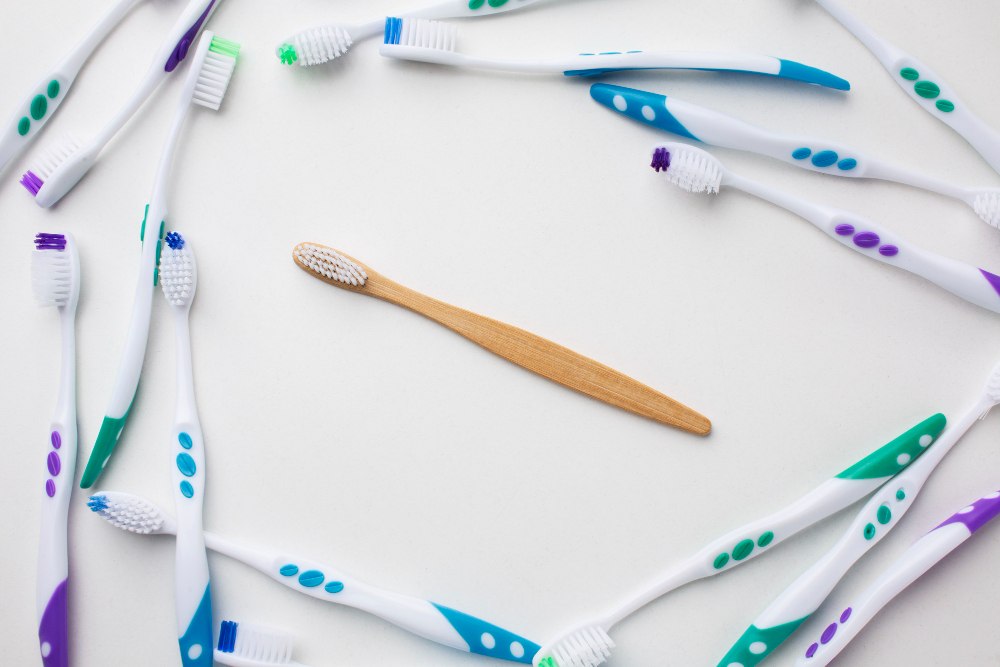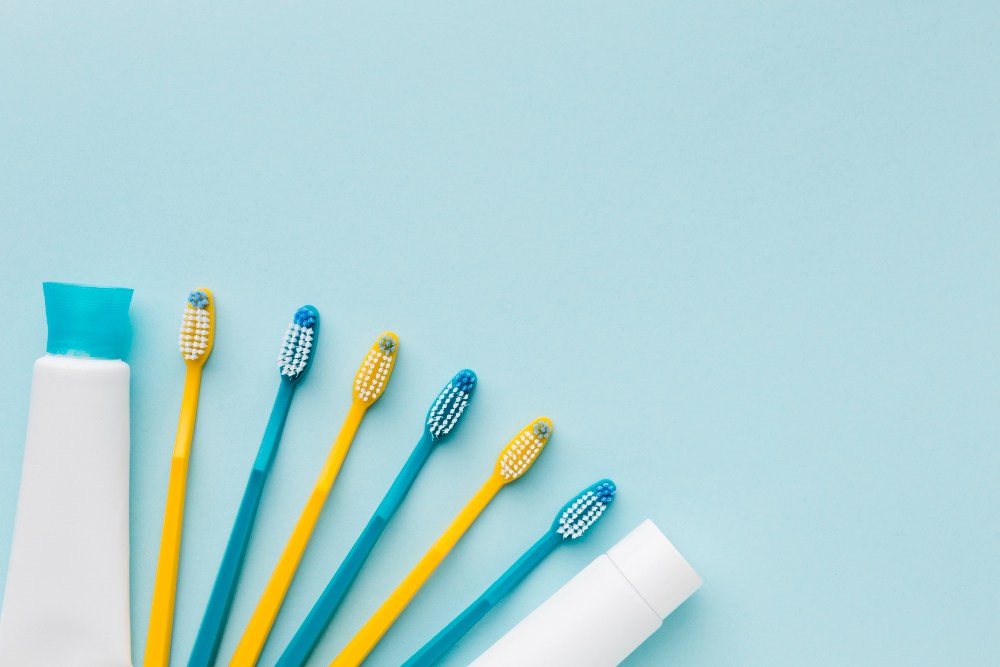Introduction:
Selecting the right toothbrush is crucial for maintaining optimal oral hygiene. With numerous options available in the market, it can be overwhelming to determine which toothbrush is best suited for your specific needs. In this blog, we will provide you with a comprehensive guide on how to choose the right toothbrush, considering factors such as bristle type, size, handle design, and electric vs. manual options. Let’s delve into the details to ensure you make an informed decision for your oral health.
1. Bristle Type:
– Soft Bristles: Dentists often recommend soft-bristled toothbrushes as they effectively clean teeth without causing excessive damage to gums or enamel.
– Medium and Hard Bristles: These bristle types are generally not recommended as they can be too abrasive, potentially causing gum recession, enamel erosion, and tooth sensitivity.
2. Size of the Toothbrush Head:
– Opt for a toothbrush head that comfortably fits in your mouth and can access hard-to-reach areas, including the back molars.
– Ideally, the head should be about one inch in length and half an inch in width.
3. Manual vs. Electric Toothbrushes:
– Manual Toothbrushes: Traditional manual toothbrushes are widely available, cost-effective, and can be effective when used with proper technique.
– Electric Toothbrushes: Electric toothbrushes are increasingly popular due to their ability to provide consistent, efficient brushing. They often feature various brushing modes (such as oscillating, rotating, or sonic technology) that can enhance plaque removal.
4. Handle Design:
– Straight Handles: Straight handles are common and suitable for most people. Look for a handle with a comfortable grip that allows for easy control during brushing.
– Angled Handles: Some toothbrushes have angled handles that can provide better access to hard-to-reach areas, such as the back teeth.
5. Consider Special Needs:
– Children: Look for toothbrushes designed specifically for children, with smaller heads, soft bristles, and vibrant colors or characters to make brushing fun for them.
– Sensitive Teeth or Gums: Opt for toothbrushes labeled “extra soft” or “ultra-soft” if you have sensitive teeth or gums.
– Orthodontic Appliances: Consider toothbrushes with special bristle designs or orthodontic toothbrushes specifically tailored for cleaning around brackets and wires.

6. Bristle Shape:
– Flat Trim: Flat-trimmed bristles are straight across the top, providing a consistent level of contact with the teeth and gums.
– Dome Trim: Dome-trimmed bristles are rounded at the top, which some individuals find more comfortable.
7. Bristle Patterns:
– Crisscross: Crisscross bristle patterns can help reach areas that are difficult to access, such as between teeth.
– Wavy or Multilevel: Wavy or multilevel bristle patterns can provide a thorough cleaning by reaching different surfaces of the teeth.
8. Replacement and Maintenance:
– Replace your toothbrush every three to four months or sooner if the bristles become frayed. Worn-out bristles are less effective at cleaning teeth.
– Rinse your toothbrush thoroughly after each use and store it in an upright position to allow it to air dry. Avoid covering the brush or storing it in closed containers, as this can promote bacterial growth.
9. Brand Reputation:
Choose toothbrushes from reputable brands known for their quality and commitment to oral health.
10. ADA Seal of Acceptance:
Look for toothbrushes with the American Dental Association (ADA) Seal of Acceptance, indicating that they have met specific standards for safety and effectiveness.
11. Personal Preference:
Consider your personal preferences when choosing a toothbrush. Factors such as color, grip style, and handle length can impact your comfort and enjoyment during brushing.
12. Consult with Your Dentist:
Your dentist can provide valuable insights and recommendations based on your specific oral health needs. They can suggest the type of toothbrush that would be most beneficial for you, taking into account any existing dental conditions or concerns.
13. Budget:
Determine your budget for a toothbrush. Manual toothbrushes are generally more affordable than electric ones, but electric toothbrushes may offer additional features and benefits worth the investment.
14. Travel-Friendly:
If you frequently travel, consider a toothbrush that is compact and easy to pack. Some electric toothbrushes come with travel cases or portable chargers, making them convenient for on-the-go use.

15. Read Reviews:
Before making a purchase, read reviews from other users to get insights into the toothbrush’s performance, durability, and overall satisfaction.
16. Replaceable Brush Heads:
If you choose an electric toothbrush, check if it offers replaceable brush heads. This can be a cost-effective and environmentally friendly option, as you only need to replace the head instead of the entire toothbrush.
17. Specialty Brushes:
Depending on your specific needs, there are specialty toothbrushes available. Examples include interdental brushes for cleaning between teeth, gum stimulators for massaging the gums, and tongue cleaners for reducing bacteria on the tongue.
18. Consider Your Technique:
Some toothbrushes are designed to assist with specific brushing techniques, such as angled bristles for the Bass technique (45-degree angle toward the gum line). Choose a toothbrush that aligns with your preferred brushing method.
19. Children’s Toothbrushes:
When selecting a toothbrush for children, prioritize features that cater to their age and needs. Look for soft bristles, smaller brush heads, and handles designed for a comfortable grip.
20. Trustworthy Retailers:
Purchase your toothbrush from reputable retailers, either in-store or online, to ensure the authenticity and quality of the product.
Conclusion:
Choosing the right toothbrush involves considering factors such as bristle type, size, handle design, and the choice between manual and electric options. Additionally, personal preferences, recommendations from your dentist, and budget considerations should be taken into account. Remember to replace your toothbrush regularly and practice proper maintenance to ensure optimal cleaning. By making an informed decision and prioritizing your oral health, you can select the perfect toothbrush for your needs and maintain a healthy smile.


